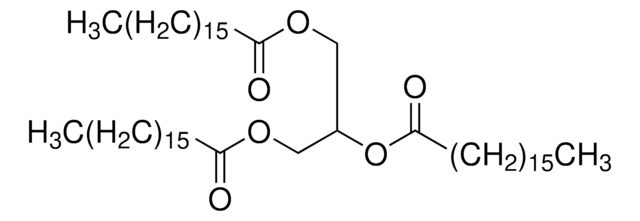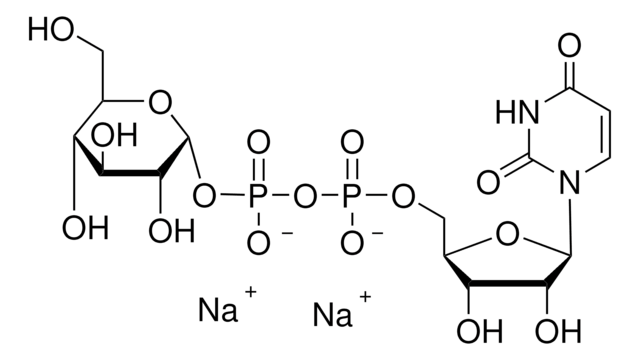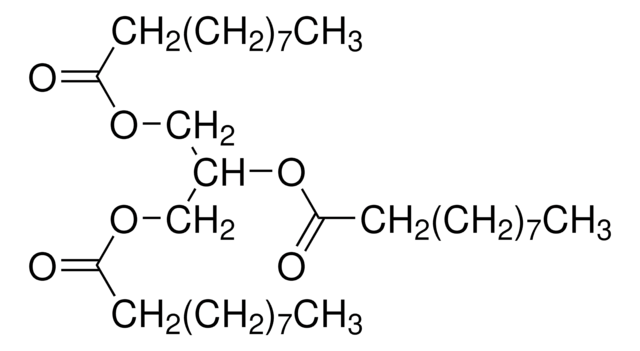T4257
Tripentadecanoin
≥99%
Sinónimos:
TG(15:0/15:0/15:0), 1,2,3-Tripentadecanoylglycerol
About This Item
Productos recomendados
origen biológico
synthetic (organic)
Nivel de calidad
Ensayo
≥99%
Formulario
powder
grupo funcional
ester
tipo de lípido
neutral glycerides
Condiciones de envío
ambient
temp. de almacenamiento
−20°C
cadena SMILES
CCCCCCCCCCCCCCC(=O)OCC(COC(=O)CCCCCCCCCCCCCC)OC(=O)CCCCCCCCCCCCCC
InChI
1S/C48H92O6/c1-4-7-10-13-16-19-22-25-28-31-34-37-40-46(49)52-43-45(54-48(51)42-39-36-33-30-27-24-21-18-15-12-9-6-3)44-53-47(50)41-38-35-32-29-26-23-20-17-14-11-8-5-2/h45H,4-44H2,1-3H3
Clave InChI
CLJLWABDLPQTHL-UHFFFAOYSA-N
Aplicación
- A rare natural lipid induces neuroglobin expression to prevent amyloid oligomers toxicity and retinal neurodegeneration.: This study explores the protective effects of a rare natural lipid, presumably including Tripentadecanoin, on neurodegeneration. It specifically focuses on neuroglobin expression to combat amyloid oligomers′ toxicity in the retina (Oamen et al., 2022).
- Analysis of fatty acid content and composition in microalgae.: This research details methods for analyzing fatty acid content and composition in microalgae, providing insights into how Tripentadecanoin and similar fatty acids are profiled in these organisms (Breuer et al., 2013).
Código de clase de almacenamiento
11 - Combustible Solids
Clase de riesgo para el agua (WGK)
WGK 3
Punto de inflamabilidad (°F)
Not applicable
Punto de inflamabilidad (°C)
Not applicable
Equipo de protección personal
Eyeshields, Gloves, type N95 (US)
Elija entre una de las versiones más recientes:
¿Ya tiene este producto?
Encuentre la documentación para los productos que ha comprado recientemente en la Biblioteca de documentos.
Los clientes también vieron
Nuestro equipo de científicos tiene experiencia en todas las áreas de investigación: Ciencias de la vida, Ciencia de los materiales, Síntesis química, Cromatografía, Analítica y muchas otras.
Póngase en contacto con el Servicio técnico














